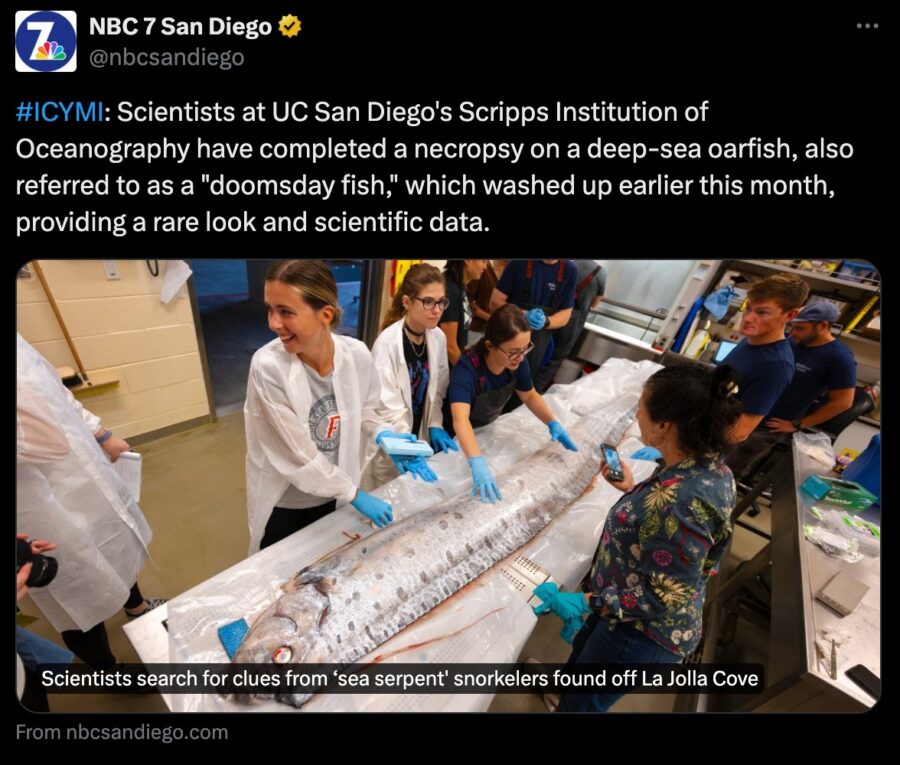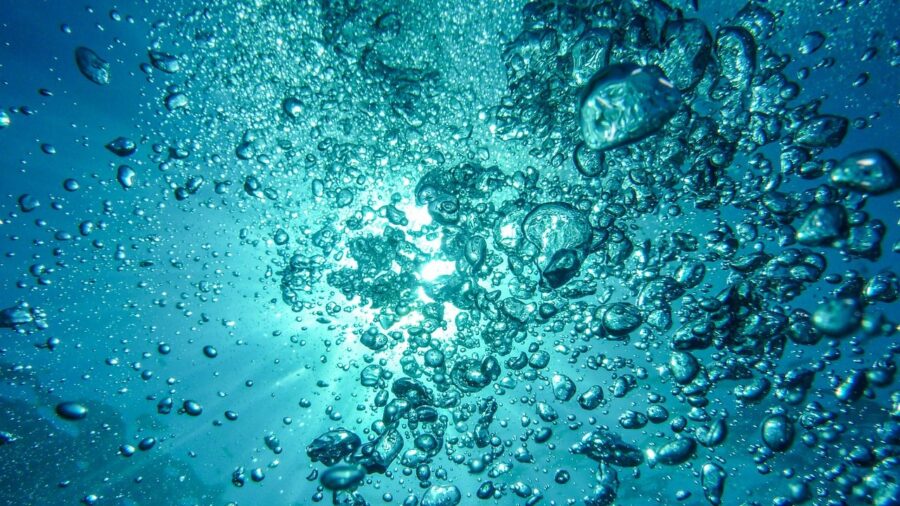Doomsday Fish Caught Off California Coast

A rarely seen short-crested oarfish recently washed up in San Diego, and Los Angeles saw a magnitude 4.4 earthquake hit just a couple of days later. This giant fish has sometimes been seen as a portent of these disasters in folklore, earning them the moniker of “doomsday fish.” Of course, studies have shown that this really is just folklore, but it’s still a unique coincidence that the relatively rare event of an oarfish finding coincided with the earthquake event.
A Very Big Fish

The so-called doomsday fish measured a whopping 12 feet long, and it’s only the 20th oarfish to wash up in the state of California since 1901, according to the Scripps Institution of Oceanography at the University of California, San Diego.
These fish are rarely seen due to their deep ocean habitats, and this rarity has perhaps contributed to the Japanese folklore that they can predict disaster.
Any Kind Of Correlation?

A 2019 study published in the Bulletin of the Seismological Society of America studied the possibility of oarfish being actual doomsday fish and if there was any real-world scientific basis to this folklore.
While it might seem far-fetched, it’s not completely out of the realm of possibility that seeing a rare, deep-sea fish in shallow waters could possibly be a predictor of disasters.
The study saw researchers put together a database of deep-sea fish sightings from newspapers, academic articles, and marine museums to compare them to the earthquake occurrence rate after the fish appeared.
However, the study revealed that the doomsday fish moniker isn’t really deserved, as the spatiotemporal relationship between the appearances of deep-sea fish and earthquakes was hardly found. Of course, that doesn’t mean this rare oarfish sighting isn’t interesting for other reasons. While the fish was dead when it was found, it was able to be recovered for research.
A Lucky Find

While oarfish, or doomsday fish if you prefer, can grow up to 36 feet long, this particular specimen ended up reaching 12 feet before it died.
The researchers aren’t sure how it ended up in the shallows of San Diego, but it was found in a reef between La Jolla Cove and La Jolla Shores. It was found by a group of former and current marine scientists who were just snorkeling and kayaking for fun around the reef.
Which is good, because someone outside of the field of marine science might not have thought to get the doomsday fish sample for study. Emily Miller, a research associate at California Sea Grant, was told by a member of the public that they saw a shiny, silver fish in the reef.
Miller said that the “highly reflective surface of the oarfish was still brilliantly obvious underwater” despite the water visibility not being great.
A Protected Reef

Once Miller saw the doomsday fish in the reef, she pushed it to the surface and asked for help, telling Live Science, “I knew immediately that this fish would be a very significant subject of study, and that the researchers at nearby institutions and agencies would want to collect the animal.” While the reef is in a protected area, the researchers were able to get the necessary permissions to get the oarfish to shore for study.
Its Final Trip

The doomsday fish was then transported to a National Oceanic and Atmospheric Administration (NOAA) facility, allowing researchers to take samples and study the animal. They’ve been unable to determine why the oarfish died, but the animal was reportedly in good condition for study when it was brought in.
Zachary Heiple, a doctoral student at Scripps Institution of Oceanography, studies the evolution of these fish and told Live Science, “It was really excellent that we were able to preserve this oarfish, and we are getting to take as many samples as we are.”
Source: GeoScienceWorld












